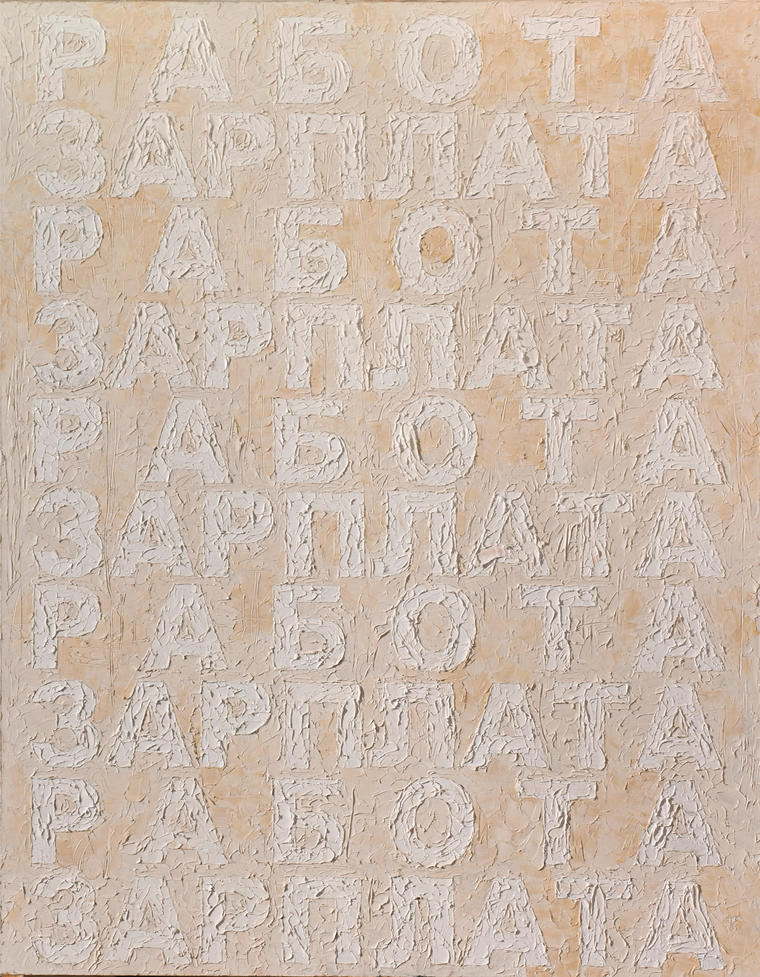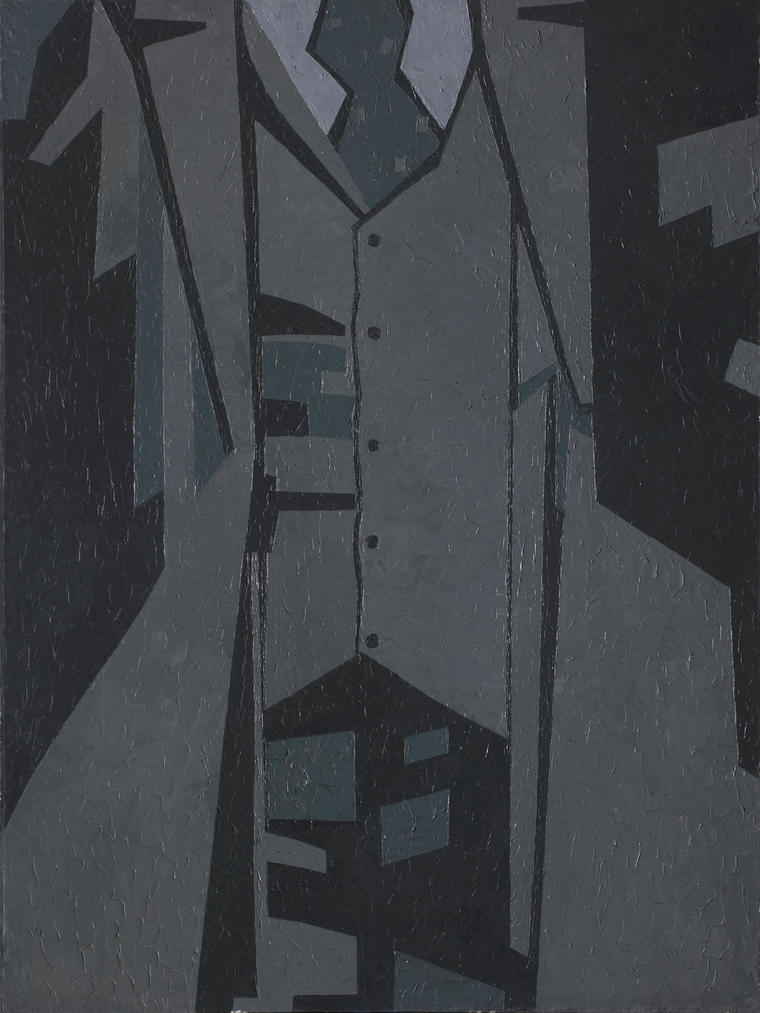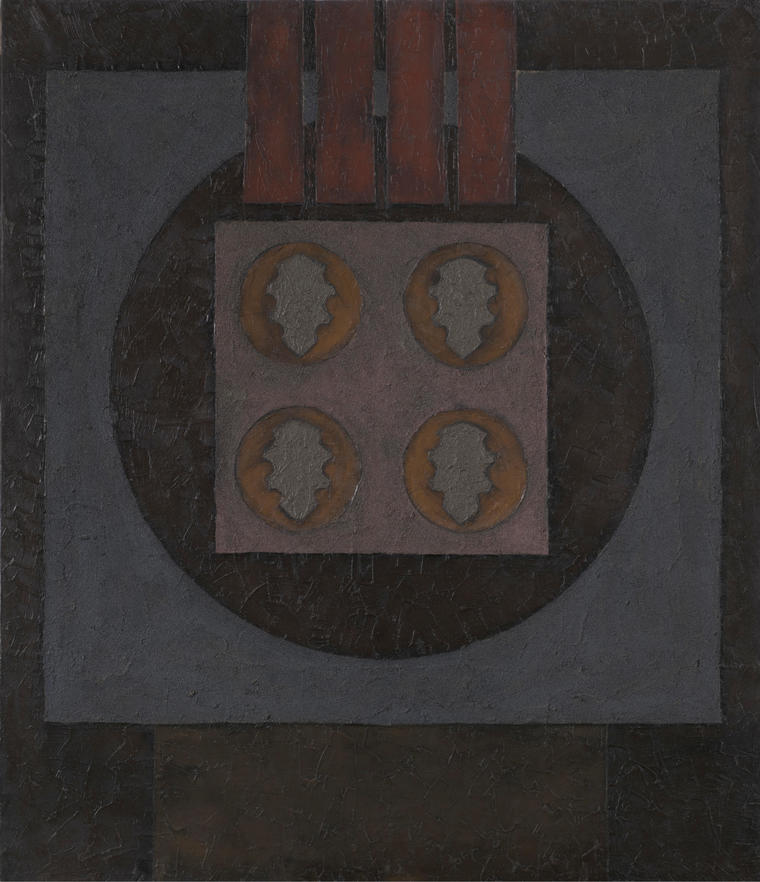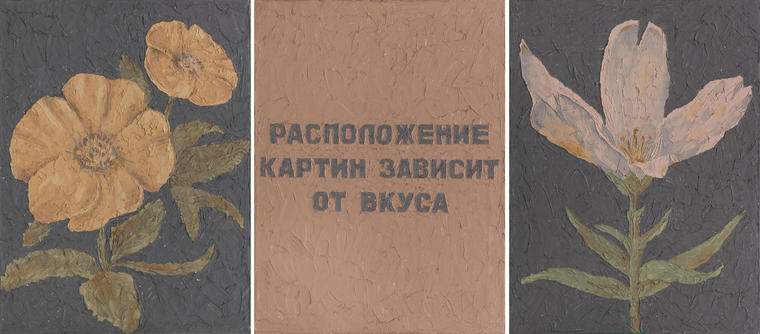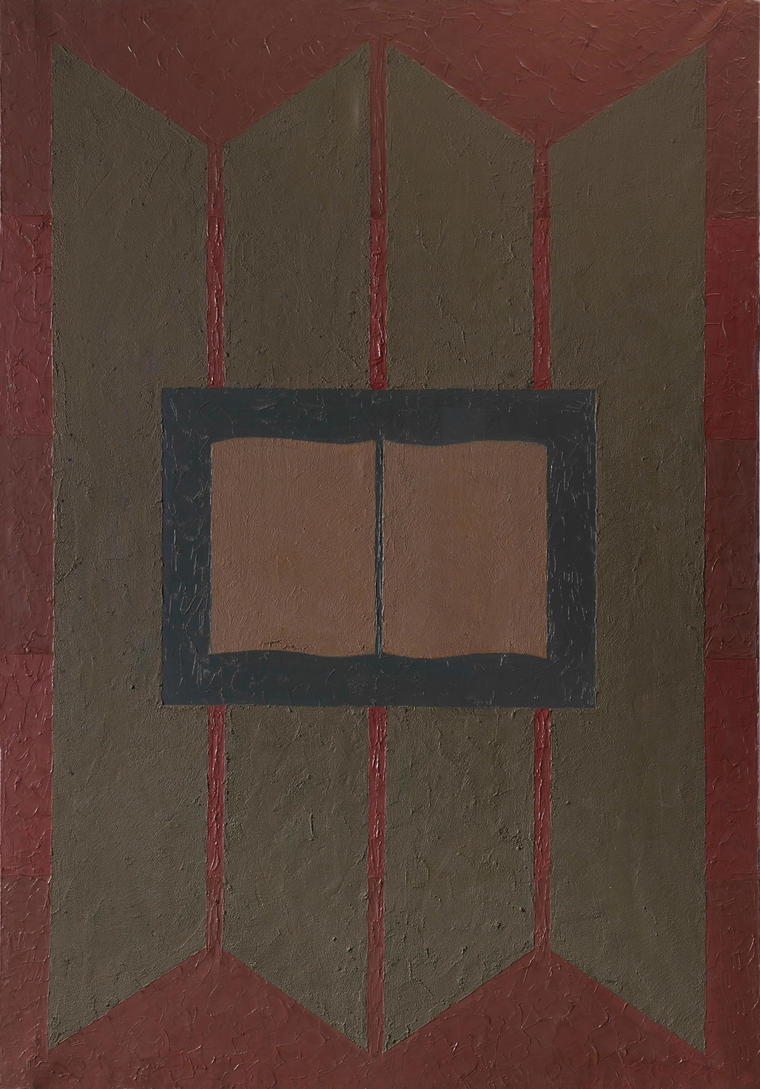
The «Dance» by Sergey Volkov refers to the series of works, executed in the technique, typical for his painting manner in the 1990’s-2000’s – chalk on a slate. In its use, he does not pretend to be original, mentioning in his interviews that he first saw drawings on school boards at one of the exhibitions in Paris in the early 1990эs, among the works of the surrealist Francisco Picabia. Joseph Beuys also drew the schemes of his installations on school boards. «Why do I paint with chalk? Firstly, it is one of the oldest natural materials used by artists. Secondly, when you draw with chalk, it can be erased – it is a metaphor for erasing time and images», – the author explains. Thus, in his black and white «Dance» time and images, on the contrary, seem to overlap one another, resembling the casually past negatives of the old film. Figures of the same people here multiply in an attempt to transmit a continuous, uninterrupted movement, leaving a barely noticeable trace in space. In using this artistic technique, one can see a kind of reference to Volkov's early experiments with photography. There is one of the most free and liberated images of dance in the work of Volkov in front of us: there is no thoughtful posture of a «Ballet dancer» here, the effectiveness of the Argentine tango «Get well soon!», the elegant harmony of the «Three Graces», but there is pleasure in the ease and joy of the movement. V
